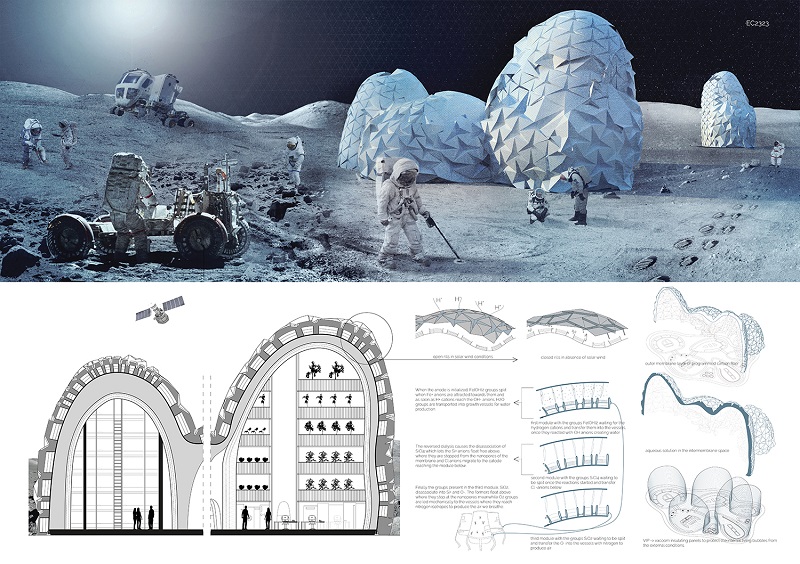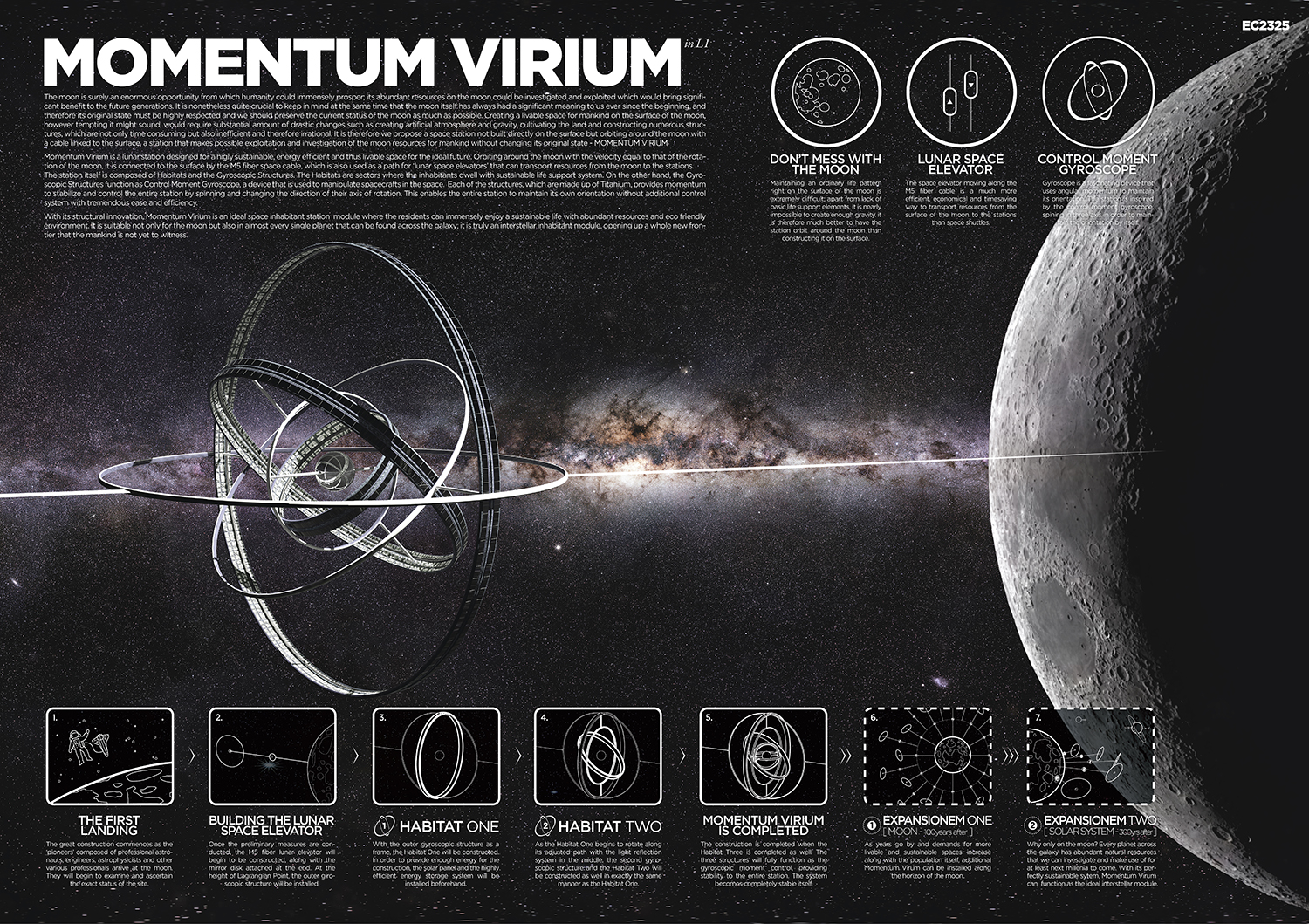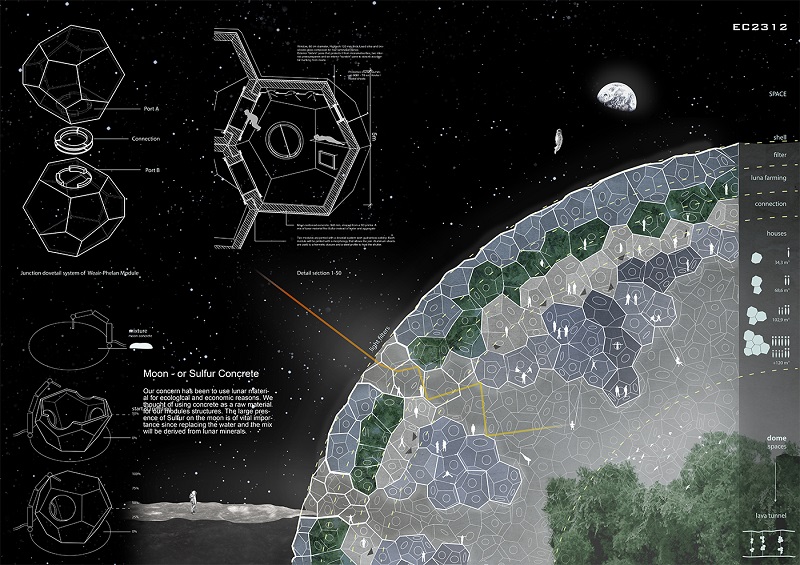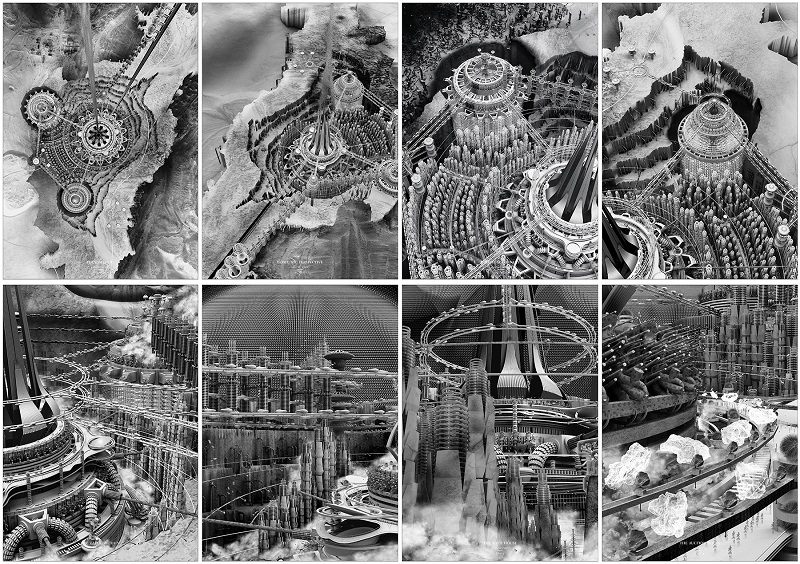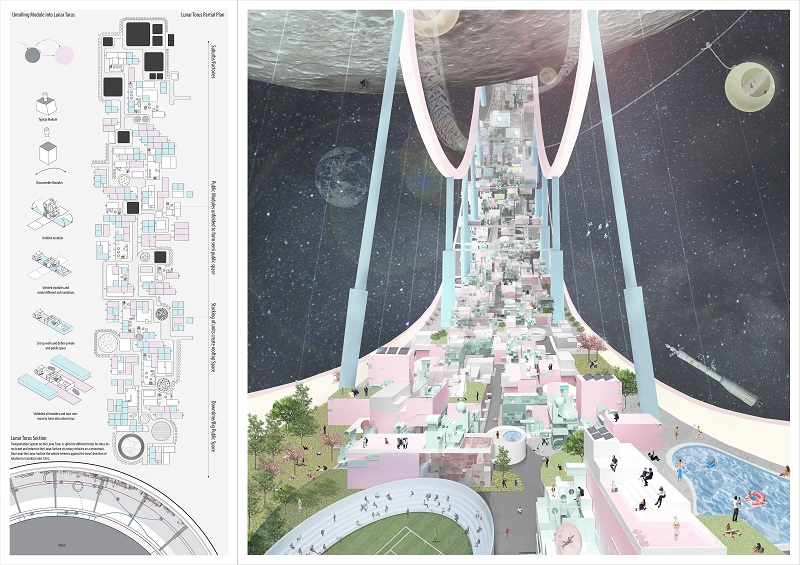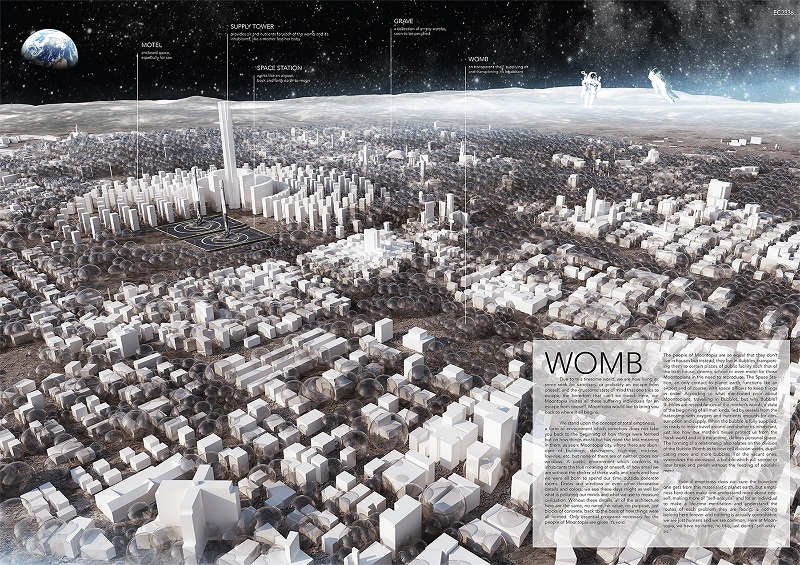Moontopia Lunar architecture
In January 2017, the online architectural platform Eleven announced the winners of an ideas and design competition - Moontopia.
Moontopia was an international challenge exploring design-led solutions for space architecture. Students, architects, designers, artists, academics and scientists from around the world were asked to propose visions for a self-sufficient lunar colony for living, working, researching and space tourism.
The judges included space-architects, academics and NASA designers.
The winning entry was:
Test Lab
by Monika Lipinska, Laura Nadine Olivier and Inci Lize Ogun
A medium-scale lunar colony, Test Lab is a base in the frontline of space exploration and lunar colonisation. The team developed a design which acts as an initial location on the Moon to conduct further testing on a satellite. The architecture grows and constructs itself through a form of 3D printed self-assembly, gradually colonising the Moon over time.
The most important element of the Test Lab is the outer membrane. Based on a simple origami pattern and made of programmed carbon fibre, it has the ability to re-shape itself when it senses pressure variations in the solar wind.
The runner-up was:
Momentum Virium in L1
by Sergio Bianchi, Jonghak Kim, Simone Fracasso, Alejandro Jorge Velazco Ramirez
This team set their Moontopia in lunar orbit rather than on the surface of the Moon itself. A space elevator links the man-made space-city with the natural satellite: a sensitive and elegant solution which mixes poetry with science-fiction.
The team reasoned that creating a habitable space on the surface of the moon would require a substantial amount of time consuming, inefficient and irrational development. So they proposed a space station orbiting around the moon with a cable linked to the surface. The station makes it possible to investigate and exploit the moon's resources without changing its original state.
The people’s choice award was given to:
Modulpia
by Alessandro Giorgi, Cai Feng, Siyuan PanEsteban Analuiza
The public’s favourite is designed as a unique form. A so-called aggregation system Weair-Phelan structure gives shape to an expandable landscape which could accommodate Moon dwellers in relatively economic, sustainable and simple spaces.
Modular in nature, Modulpia would grow organically over time and, by employing bioregenerative strategies, would be able to provide its own food, plants (for CO2 removal and oxygen production), and drinkable water.
Several other entries were commended, including:
by Sean Thomas Allen
The fantastic graphics of this entry are matched by extensive research. In its form alone, Platinum City is a fantasy-driven utopia. It is a new extraterrestrial urban model based on cutting-edge science and technology that is actually available today. Could this be a vision for what living on the Moon at a large-scale would actually look like?
The self-sufficient lunar colony is a city fathomed as an organic computer, with its grandiose, drone-crafted asteroid regolith architectures engorged on wet technologies and anchored to the platinum rich Rosetta Asteroid by a fragile tether of carbon nano-tubes.
Upside Down
by Ryan Tung Wai Yin, Ho Wing Tsit Teresina, Joshua Ho
There is clearly a lot of passion, thought and work behind this beautiful design. In Upside Down, the design team has set out a plan for interplanetary exploration and subsequent colonisation of their real objective: Mars. The Moon is used to gather experience and resources; a sort of test and training site for a bigger galactic goal.
WOMB
by Prapatsorn Sukkaset, Saran Chamroonkul
In this design, the Moon becomes an almost ego-less meditation ground. An escape from the hustle and bustle of everyday life on Earth which drowns our senses and generates stress. In Womb, the Moon becomes a place of contemplation, where mankind can seek out the deeper meanings of human consciousness. And for those times when meditation and contemplation are not enough, WOMB provides a space-motel catering for more ‘animalistic’ human needs.
To see them all see Eleven Magazine.
[edit] Related articles on Designing Buildings
Featured articles and news
RTPI leader to become new CIOB Chief Executive Officer
Dr Victoria Hills MRTPI, FICE to take over after Caroline Gumble’s departure.
Social and affordable housing, a long term plan for delivery
The “Delivering a Decade of Renewal for Social and Affordable Housing” strategy sets out future path.
A change to adoptive architecture
Effects of global weather warming on architectural detailing, material choice and human interaction.
The proposed publicly owned and backed subsidiary of Homes England, to facilitate new homes.
How big is the problem and what can we do to mitigate the effects?
Overheating guidance and tools for building designers
A number of cool guides to help with the heat.
The UK's Modern Industrial Strategy: A 10 year plan
Previous consultation criticism, current key elements and general support with some persisting reservations.
Building Safety Regulator reforms
New roles, new staff and a new fast track service pave the way for a single construction regulator.
Architectural Technologist CPDs and Communications
CIAT CPD… and how you can do it!
Cooling centres and cool spaces
Managing extreme heat in cities by directing the public to places for heat stress relief and water sources.
Winter gardens: A brief history and warm variations
Extending the season with glass in different forms and terms.
Restoring Great Yarmouth's Winter Gardens
Transforming one of the least sustainable constructions imaginable.
Construction Skills Mission Board launch sector drive
Newly formed government and industry collaboration set strategy for recruiting an additional 100,000 construction workers a year.
New Architects Code comes into effect in September 2025
ARB Architects Code of Conduct and Practice available with ongoing consultation regarding guidance.
Welsh Skills Body (Medr) launches ambitious plan
The new skills body brings together funding and regulation of tertiary education and research for the devolved nation.
Paul Gandy FCIOB announced as next CIOB President
Former Tilbury Douglas CEO takes helm.
UK Infrastructure: A 10 Year Strategy. In brief with reactions
With the National Infrastructure and Service Transformation Authority (NISTA).






